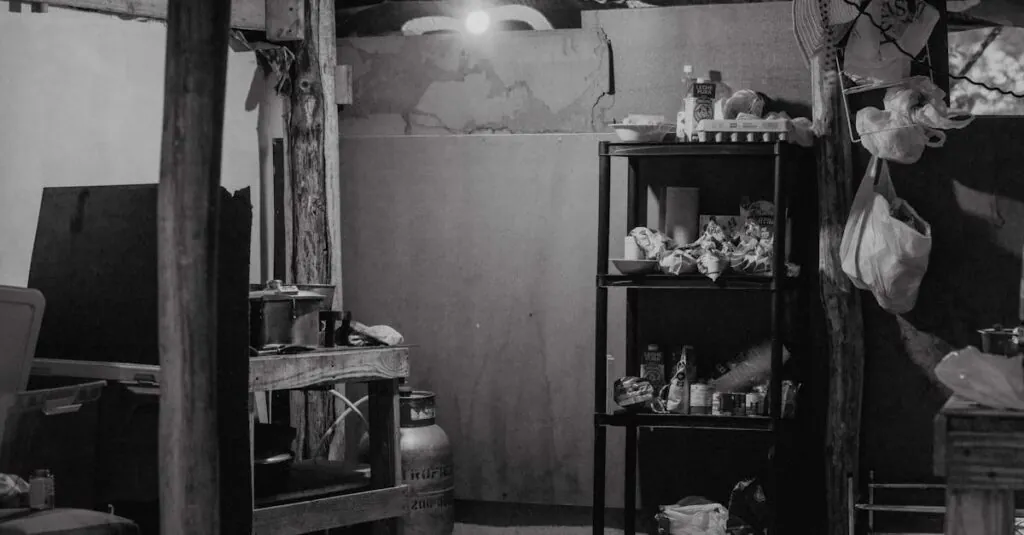Table of Contents
ToggleIn the world of construction, installation is the unsung hero. It’s the backbone that holds everything together, from the cozy homes we live in to the towering skyscrapers that scrape the sky. But let’s be honest—installation construction isn’t just about hammering nails and tightening bolts. It’s a delicate dance of precision and creativity, where every piece has its place and purpose.
Imagine a symphony where every instrument plays in perfect harmony. That’s what installation construction aims for. Whether it’s plumbing that won’t leak or electrical work that doesn’t spark a mini fireworks show, getting it right is crucial. So buckle up as we dive into the nitty-gritty of installation construction, where the stakes are high, and the rewards are even higher. Get ready to see how skilled professionals turn blueprints into reality, one carefully placed piece at a time.
Overview of Installation Construction
Installation construction encompasses various tasks that transform architectural designs into physical structures. Skilled tradespeople perform essential activities such as plumbing, electrical, and HVAC system installations. Each component requires precision and adherence to safety standards to ensure overall building integrity.
Installation isn’t limited to major systems. Smaller elements like fixtures and finishes play critical roles in functionality and aesthetics. Craftspeople must understand materials and techniques while being detail-oriented to achieve high-quality outcomes.
Safety and compliance are paramount in installation construction. Compliance with local building codes ensures that structures meet legal requirements and safety standards. Workers must stay informed about relevant regulations to minimize risks on the job site.
Efficiency also thrives in this field. Advanced tools and technologies, such as Building Information Modeling (BIM), streamline processes and enhance collaboration among teams. Integration of these tools reduces errors and increases project timelines.
Challenges in installation construction often arise during the coordination of different trades. Conflicts can emerge when timelines overlap or when material supply issues occur. Project managers must maintain clear communication between teams to address these challenges promptly.
Ultimately, installation construction serves as the backbone of any building project. It requires expertise, collaboration, and meticulous attention to detail. The foundation laid by skilled installations supports all aspects of the final structure, ensuring safety and functionality for long-term use.
Types of Installation Construction
Installation construction varies by context, emphasizing the unique needs of each setting. Below are the primary categories of installation construction.
Residential Installation
Residential installation covers systems and components tailored for homes. These installations typically include plumbing, electrical wiring, and HVAC systems. Skilled tradespeople must ensure compliance with local building codes during every phase of construction. Attention to detail enhances not just functionality but also aesthetics. Fixtures like faucets and light fixtures demand precise installation for optimal performance. In addition, regular maintenance remains essential to uphold system performance and extend lifespan.
Commercial Installation
Commercial installation involves more complex systems designed for businesses and public spaces. This category features intricate electrical systems, advanced HVAC solutions, and specialized plumbing for large buildings. These installations require conformity to strict safety standards to protect both employees and customers. Moreover, project deadlines often emphasize the need for efficient coordination among various trades. Detailed planning and collaboration within teams significantly streamline the construction process. Functionality and user experience become key considerations in the design and implementation phases.
Industrial Installation
Industrial installation focuses on large-scale systems used in factories and warehouses. This sector includes heavy machinery setup, specialized piping systems, and robust electrical configurations. Compliance with industry-specific standards ensures safety and optimal system performance. Complex installations often involve significant logistical challenges, necessitating careful scheduling and resource allocation. Experienced professionals conduct thorough inspections and testing post-installation to verify operational efficiency. Robust infrastructure designed for longevity forms a critical aspect of industrial installation.
Key Components of Installation Construction
Installation construction involves various essential components that contribute to its success. Proper selection of materials and tools greatly influences the effectiveness and longevity of installations.
Materials Used
Materials form the basis of installation construction, ensuring both functionality and durability. Common options include PVC piping for plumbing systems, copper wiring for electrical connections, and high-efficiency insulation for HVAC units. Each material plays a critical role in safety and performance. Sustainable materials increasingly gain traction, meeting both ecological and regulatory standards. Understanding the unique properties of materials allows professionals to make informed choices that optimize installations.
Tools and Equipment
Tools and equipment significantly enhance the efficiency of installation tasks. Electricians rely on multimeters and wire strippers to ensure accurate connections. Plumbers utilize power drills and pipe wrenches for precision and speed during installations. HVAC technicians depend on gauges and diagnostic tools to maintain optimal system performance. Advanced technologies, such as laser levels and thermal imaging cameras, improve accuracy and facilitate preemptive problem-solving. Effective use of these tools maximizes productivity while minimizing errors and enhancing safety.
Best Practices in Installation Construction
Best practices in installation construction ensure efficiency, quality, and safety. Following established guidelines significantly enhances project outcomes.
Planning and Preparation
Effective planning and thorough preparation serve as the foundation for successful installation construction. Project managers must create detailed schedules that account for every trade involved. Communication among teams establishes clear expectations and timelines. A well-defined scope of work outlines all tasks, preventing misunderstandings. Material selection plays a crucial role; using high-quality resources avoids future issues. Regular site assessments help identify potential challenges early, allowing for proactive solutions. This methodical approach facilitates a smoother installation process, reducing delays and minimizing costs.
Safety Standards
Safety standards protect workers and ensure compliance with local regulations. Skilled tradespeople should always be trained in the latest safety protocols. Regular safety inspections on the job site identify risks and prevent accidents. Personal protective equipment (PPE) requirements must be enforced to safeguard employees. Adhering to Occupational Safety and Health Administration (OSHA) guidelines minimizes liability and promotes a safe working environment. Furthermore, conducting safety meetings keeps everyone informed about hazards and best practices. Prioritizing safety on installation construction projects not only secures legal compliance but also fosters a culture of care among workers.
Installation construction is the backbone of any successful building project. It requires a blend of skill precision and creativity to transform plans into reality. Skilled tradespeople play a vital role in ensuring that every system functions seamlessly while adhering to safety standards.
The importance of advanced tools and technologies cannot be overstated. They enhance efficiency and accuracy across various installation types. By prioritizing effective communication and meticulous planning teams can overcome challenges and deliver high-quality results.
Ultimately the commitment to safety compliance and craftsmanship shapes the longevity and functionality of structures. A well-executed installation process not only meets legal requirements but also elevates the overall aesthetic and performance of a building.





